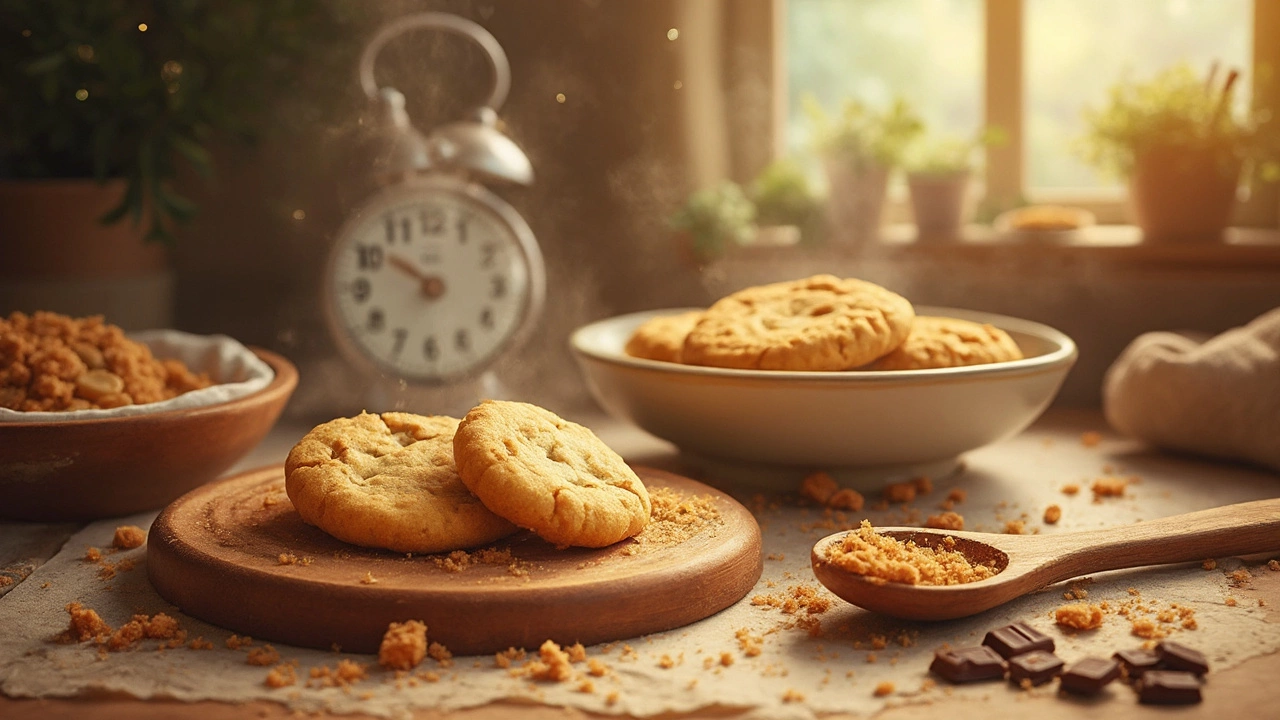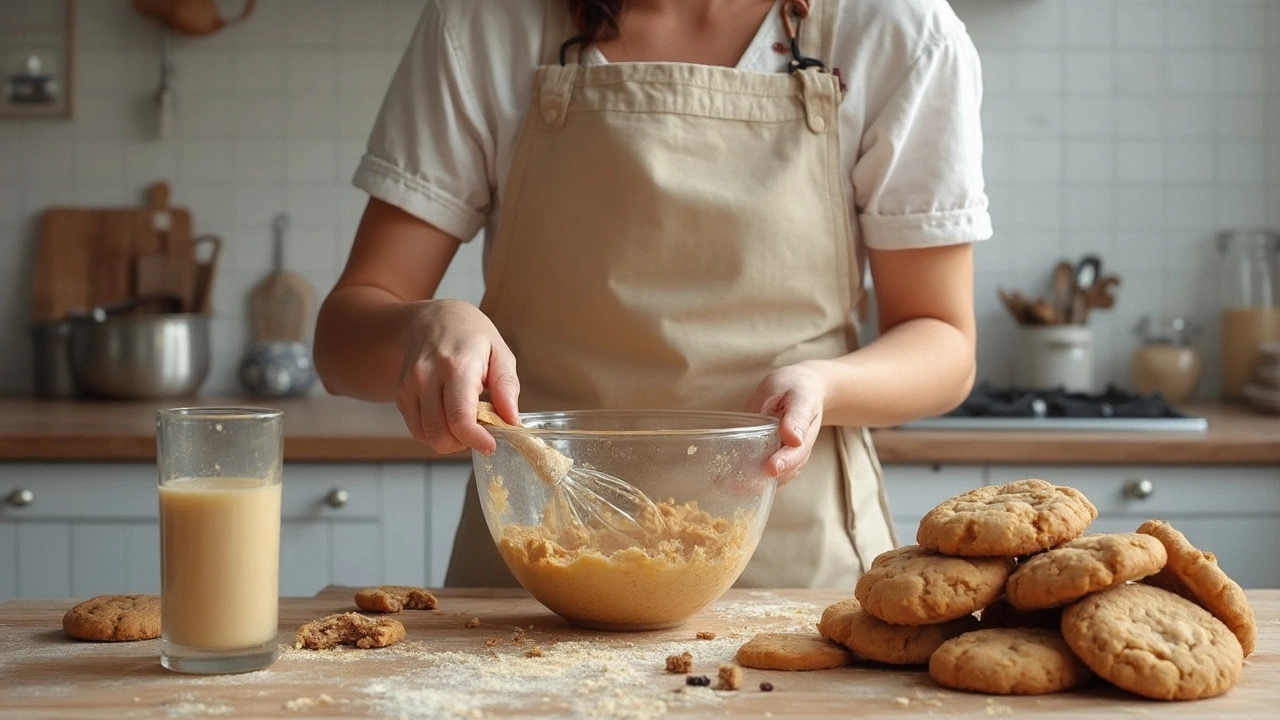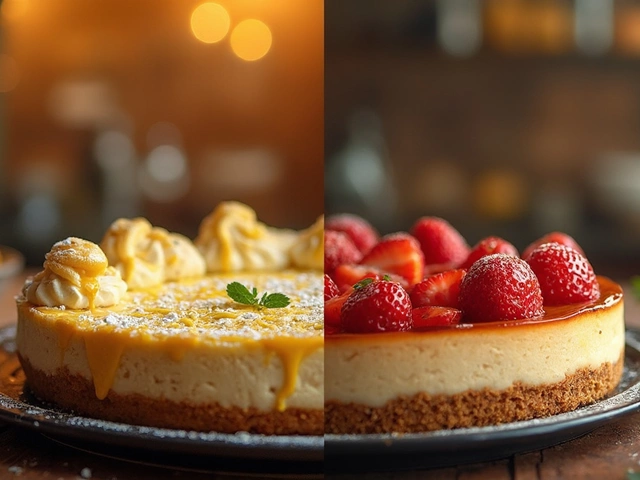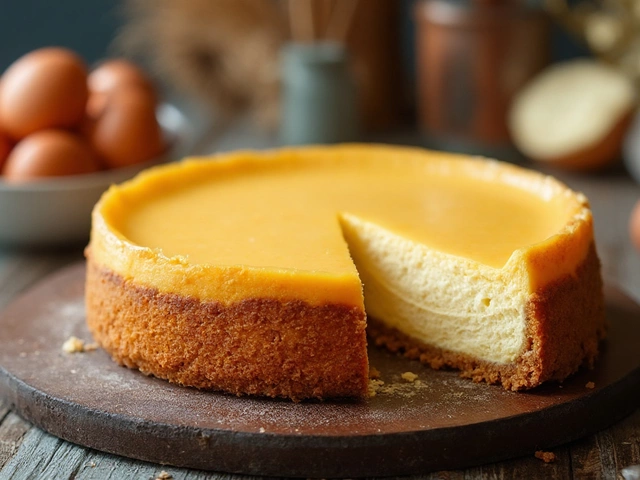
Ever bitten into a cookie, and it practically melted in your mouth? That's the magic of a perfectly soft cookie, and getting that texture is all about balance. It's not just about luck or accident; it’s about knowing a few key tricks.
First things first, ingredients are your best friends. To start, you might want to swap some of that white sugar with brown sugar. Why? Brown sugar has more moisture, thanks to its molasses content, which helps lock in that chewy texture.
Butter also plays a big part. Room-temperature butter, not melted or cold, is ideal. It's soft enough to blend well, which helps in building the right structure for your cookies. And let's be honest, who doesn't love buttery goodness in a cookie?
Then there’s the baking itself. Overbaking is a common culprit for turning potentially soft cookies into crunchy ones. Keep an eye on them, and when the edges are just slightly golden, it’s usually time to take them out. They might not look fully cooked, but they'll continue to firm up as they cool.
- Key Ingredients for Softness
- The Role of Sugar and Fat
- Temperature and Baking Time
- Mixing Techniques
- Flavor Variations
- Storing Soft Cookies
Key Ingredients for Softness
When it comes to baking soft cookies, choosing the right ingredients is like setting the perfect stage for a concert. Each component has its role and creates that delightful texture everyone loves.
Sugar: The Sweet Secret
Sugar isn't just there for sweetness. The kind you use can make a huge difference. Brown sugar is your go-to for soft cookies because its molasses content helps retain moisture, leading to a chewier outcome. You can use a mix of brown and white sugar, but make brown the star of the show.
Butter and Its Creamy Influence
Butter is another champion in the softness game. Room-temperature butter is key; it should be soft enough to leave slight fingerprints when pressed, but not mushy. The perfect creaming of butter with sugar creates air pockets, essential for a tender bite.
The Flour Factor
While all-purpose flour is the classic choice, experimenting with a portion of cake flour can bump up the softness. Cake flour has less protein, which means less gluten and more tenderness. Try using about one-fourth of the total flour as cake flour for a fluffier texture.
Eggs: Binding Everything Together
Eggs not only bind ingredients but also contribute to moisture and richness. Adding an extra yolk can add that bit of chewyness and softness. Want to try something different? Using melted butter instead of softened in your homemade cookies can make them even softer.
Cream of Tartar and Its Role
A pinch of cream of tartar can make soft cookies even softer. It acts as a stabilizing agent and prevents sugar from crystallizing, contributing to tender cookies.
| Ingredient | Benefit for Softness |
|---|---|
| Brown Sugar | Moisture retention |
| Butter | Creates air pockets for tender texture |
| Cake Flour | Less gluten for softer cookies |
| Cream of Tartar | Prevents sugar crystallization |
By playing around with these ingredients, you're setting yourself up for cookie perfection every time. Remember, practice makes perfect, and experimentation is all part of the fun!
The Role of Sugar and Fat
So, what's the deal with sugar and fat in making soft cookies? It's all about chemistry, really. Sugar and fat work together to create texture and flavor, crafting that soft, delectable bite.
The Sweet Science
Let's talk sugar. Swapping some granulated sugar for brown sugar is like hitting the jackpot for cookie texture. Brown sugar contains molasses, which adds moisture and results in a chewier cookie. Plus, it contributes a slight acidity that reacts with baking soda, giving your cookies a little extra lift.
Granulated sugar, on the other hand, helps cookies to spread, but too much can make them crispy. So, a mix of both is often ideal for the right balance.
Butter and Beyond
Moving on to fats, butter is the go-to choice for homemade cookies due to its flavor and texture. Using softened butter ensures the right blend with sugars, coating flour proteins and limiting gluten formation. This means a softer, more tender cookie.
If you're feeling adventurous, adding a bit of cream cheese or sour cream can tweak the flavor and boost the softness. They're also great substitutes if you want to cut down some butter without compromising on that melt-in-your-mouth feel.
The Balance of Proportions
Getting the perfect soft cookie is largely about balancing these components. Here's a simple ratio to keep in mind for a dozen cookies:
| Ingredient | Amount |
|---|---|
| Brown Sugar | 3/4 cup |
| Granulated Sugar | 1/4 cup |
| Butter | 1/2 cup |
Remember, consistency is key. Too much sugar or fat, and you'll end up with a cookie that's more grease than greatness. Too little, and it'll lack that soft fluffiness you're aiming for.
By understanding the role of sugar and fat, you're one step closer to mastering the art of baking the perfect soft cookies. Happy baking!
Temperature and Baking Time
When it comes to baking soft cookies, your oven's temperature and how long you bake make a huge difference. Too hot or too long, and you've got yourself a batch of crispy critters instead.
Finding the Right Temperature
Most cookie recipes call for baking at around 350°F (175°C). This is generally the sweet spot for soft cookies, but you might have to tweak this based on what you prefer or your oven's quirks. A lower temperature like 325°F (160°C) can slow things down and give your cookies that soft, chewy center without burning the edges.
"The key to a soft cookie is pulling it out of the oven just before it's completely set," says baking expert Linda Smith, "once you see those edges turn lightly golden, you're good to go."
Timing is Everything
Baking time generally ranges from 8 to 12 minutes. The magic happens when cookies look slightly underbaked when you first pull them out. Want them softer? Aim for the shorter time range. It might feel weird, but remember, cookies continue to bake on the hot tray even after you take them out.
Working with Different Ovens
Ovens can be finicky. The heat might not distribute evenly, affecting how your cookies bake. Rotate your baking sheet halfway through to balance things out. And always preheat your oven—starting from a cold oven throws off everything.
Here's a quick guide for different cookie textures and preferred bake times:
| Texture | Temperature | Time |
|---|---|---|
| Soft | 325°F (160°C) | 8-10 minutes |
| Slightly Crispy | 350°F (175°C) | 10-12 minutes |
Using this knowledge, you can easily perfect your ideal homemade cookies. Just remember, mastering temperature and timing can turn an okay cookie into one that's irresistibly soft and chewy.

Mixing Techniques
When it comes to nailing that perfect soft cookie, how you mix your ingredients can make all the difference. Seriously, it's like the difference between a half-melted marshmallow and a rock-solid candy cane. So, let’s get into it.
Why Order Matters
First up, there's a reason for the order of things. Typically, you'll cream together your butter and sugar before anything else. This step creates a fluffy mixture that gives your cookies a light, soft texture. Make sure your butter is at room temperature. Cold butter won’t mix well, and melting it can lead to greasy cookies.
"For soft cookies, cream the butter and sugar until light and fluffy, about three minutes," advises baking expert Sarah Kieffer.
The Importance of Gentle Mixing
This might surprise you, but after creaming, you should mix gently. Once you add the flour, slow things down. Overmixing the flour can lead to tough cookies because it overdevelops the gluten. Nobody wants that! Stir just until you don't see any streaks of flour.
Tool Talk
What you mix with matters, too. While a stand mixer can be convenient, a hand mixer or even a sturdy spatula can work wonders, giving you more control over the process. Plus, fewer dishes. Who doesn't love that?
Adding the Goodies
When it comes time to add chocolate chips or nuts, fold them in gently with a spatula. Your dough should barely hold together. Think of it like tucking little treasures into a blanket of goodness.
So there you have it! Keep these mixing techniques in mind next time, and your soft cookies will have that perfect melt-in-your-mouth quality.
Flavor Variations
Spicing up your homemade cookies with new flavors can be a total game-changer. Whether you're mixing in spices or adding extra fillings, these small tweaks can take your cookies to the next level.
Adding Spices
Cinnamon and nutmeg are classic choices that add warmth and depth. Just a teaspoon can transform your cookie dough, making it perfect for those cozy nights in.
Mix-ins Galore
If you want to get adventurous, consider adding chopped nuts like pecans or walnuts. Not only do they provide a satisfying crunch, they also complement the sweetness of the dough. And let's not forget about chocolate chips—they're a timeless favorite, but you can explore beyond just milk or dark chocolate. White chocolate or even butterscotch chips add a sweet twist.
Fruits and Zest
Dried fruits like cranberries or raisins can bring a burst of flavor. For something a bit more citrusy, try adding a bit of lemon or orange zest. It brightens up the cookie, adding a fresh note.
Experimenting with Extracts
Swapping vanilla extract for almond or peppermint can offer unexpected yet delightful flavors. A little goes a long way, so start with a half teaspoon and adjust to taste.
Sweet and Salty
For those with a love for sweet and salty combinations, adding a sprinkle of flaked sea salt on top just before baking can enhance the flavors in a way that’s truly satisfying.
With these baking tips, you have all you need to experiment and create a tasty variety for your cookie stash. Just remember, baking is as much about having fun as it is about following recipes.
Storing Soft Cookies
So you've made some amazing, soft cookies, and now you want them to stay that way. The key to maintaining their softness lies in how you store them. But don't worry, it's pretty straightforward.
First off, let your cookies cool completely on a wire rack before storing them. Putting them away while they’re still warm traps moisture, making them soggy. Sounds simple, but patience really pays off here.
Use the Right Container
Once they've cooled, store them in an airtight container. Airtight is especially crucial; it locks in the moisture, preventing them from drying out. Have you ever put cookies in a baggie and found them hard the next day? That's your culprit right there.
The Slice of Bread Trick
Here's an insider tip: add a slice of bread to the container. It might sound weird, but the cookies will draw moisture from the bread, leaving them soft and delightful. Just change the bread slice every couple of days, as it can get stale.
Freezing Soft Cookies
Thinking of having them around for a while? Pop 'em in the freezer. Wrap each cookie individually with plastic wrap, or layer them in a container separated by parchment paper. Just thaw them at room temperature, and they're almost as good as fresh-baked.
Following these steps can keep your homemade cookies soft for up to a week! Remember, it's all about moisture control and airtight storage. And there it is, you're all set to enjoy your cookies just like the moment they came out of the oven. Mmm, can you taste it already?





